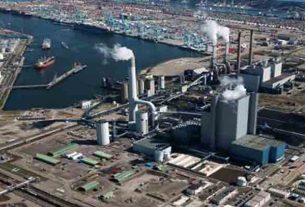ISLAMABAD: Despite significantly higher needs, Pakistan received a paltry $2.324 billion of budgeted foreign assistance in first half (July-December) of the current fiscal year, apparently due to the inability of the PTI government to secure an umbrella support from the International Monetary Fund (IMF).
The latest data on foreign assistance including loans and grants released by the Economic Affairs Division (EAD) showed that foreign inflows this year were down almost 61 per cent form a healthy $5.9bn flow of the same period last year.
The half-yearly total inflows against budgeted estimates stood at about 21pc. The government had estimated about $9.7bn foreign assistance for the current fiscal year including $394 million of grants and $9.3bn as loans.
These flows, however, do not include about $4bn contributed by Saudi Arabia ($3bn) and United Arab Emirates ($1bn) as special economic bailout package signed off by the PTI government and parked directly into the State Bank of Pakistan as safe deposits at 3.18pc interest rate. These flows were not part of the budget estimates though. Total inflows stood at $6.3bn in the first six months.
The data showed Pakistan received about $500m loan in first six months from commercial banks including $184m from Dubai Bank, $20m from Noor Bank and $295m from Suisse Bank AG, United Bank Limited and Allied Bank Limited.
Likewise, receipts from multilateral stood at $770m, including $339m from Asian Development Bank (ADB), $272m from Islamic Development Bank and $99m from the World Bank as international development assistance.
The total inflows in six months from bilateral creditors amounted to $1.054bn with highest share of $835m from China, besides assistance from France, Germany, Japan, Saudi Arabia and the United States.
The EAD data put the total grants the country received in first six months at $168m and loans worth $2.156bn. The original budget presented by the PML-N for the current year had estimated $2bn from foreign commercial banks for 2018-19 and the country received about $499m.
The Chinese loan disbursements under the China-Pakistan Economic Corridor included $185.83m for the Orange Line Metro Project, $417.65m for Sukkur-Multan section, $122.95m for Havelian-Thakot road, $69.48m for Pakistan Remote Sensing Satellite and $2.8m for construction of cross border optical fibre cable system.
Officials explained that lower than budgeted flows from commercial, multilateral and bilateral lenders could have substantial short- to medium-term challenges and could weaken government stance to maintain foreign exchange reserves. They said the budgeted inflows were meant for long-term project and programme financing and flow into the system as part of the balance of payment support compared to safe deposits from the friendly countries. Such funds could be a good sign for balance sheet purpose but actually could not utilised, an official said.
Officials said the major reason behind lower than estimated disbursement was the inability of the government to strike a deal with the IMF, resulting in fewer flows from the World Bank and the ADB. Also, the government could not float planned Eurobond and sukuk that were estimated to fetch about $3bn and hence were replaced by commercial loans.



